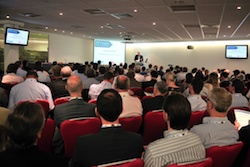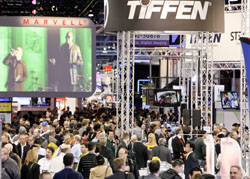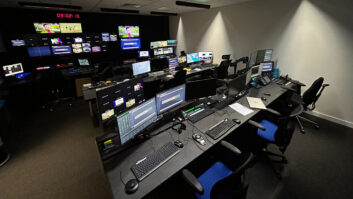
2018 promises to be a big year for live online television, with many major sporting events in the pipeline and dynamic ad insertion (DAI) opening up highly valuable new inventory. This coincides with a new sense of bullishness from broadcasters, as revealed in a report that Yospace sponsored recently from leading industry analyst MTM
The report found that broadcasters are rediscovering some of their spark after several years of nervousness around the threat to their dominance posed by the major internet companies, or ‘FAANG’, as they’re increasing becoming known. Such bullishness is partly down to the noises coming from some of the biggest advertisers and media buyers who clearly still have a preference for live and linear television, citing its mass reach and single point-of-contact for trading and measurement.
There is also a growing sense of frustration at the likes of Facebook and YouTube from advertisers who have been used to the high quality of delivery and standardised measurement that television offers. After all, TV is a premium experience. The incredibly high standards of content, video delivery and reliability are simply unmatched by any other medium. Advertisers are able to deliver a premium 30-second ad in an environment where levels of viewability are exceptionally high – and not just of the first few seconds of the ad, but its entire 30-second duration.
If you apply these standards to major sports events with huge captive, concurrent audiences, such as the Australian Open, Commonwealth Games or World Cup, then the value of the available inventory increases significantly. Compared to the likes of Facebook and YouTube where three seconds, in some cases without audio, can be enough to register as a view, there is simply no comparison.
However, OTT television does not currently provide mass concurrency and a single point-of-access for advertisers like traditional TV does. It also doesn’t offer a single, joined-up way of enhancing advertising with user data. Despite any bullishness in the industry, there is still a sense of urgency about translating traditional TV’s USP to the online world. It’s clear from the report that broadcasters do not underestimate the scale of this task.
Centralised infrastructure is required for OTT advertising to allow buyers to trade and accurately measure their ads. This needs to be achieved across multiple video formats, multiple players and an increasingly fragmented array of platforms and devices, each with their own personality. On top of this, there is a breadth of new functionality to consider.
Enhanced transport controls with functions such as live rewind and overlays are unquestionably improving the user experience, but they are making ad-tech integrations more complex. Addressability and interactivity represent brilliant advances for advertising, but they also add a level of complexity. It is imperative that technology such as DAI sits comfortably within this modern user experience – at scale, and with exceptionally high levels of reliability.
For broadcasters, there is a huge opportunity to significantly enhance the value of their OTT inventory, especially where live sports is concerned. Single points of trading and measurement and the effective use of data are essential in realising this opportunity. Collaborations between some of the most unlikely parties are required in order to see this though – and looking at Channel 4 and BT’s recent announcement, it’s clear that some of these relationships are already being forged.
Broadcasters know that the FAANG threat is not going away, with Amazon in particular widely expected to bid for major sports rights at some point. If they do, then the data they have access to would help create an incredibly attractive proposition for advertisers, not to mention the links they could provide from an ad directly to a shopping mall. However, broadcasters also have access to data and if they can manage and use it effectively as a collective in the online world then they too will continue to be a prime target for ad spend.
Collaborations are in their early stages and a lot needs to happen if broadcasters are to achieve their goal of offering a straightforward route to mass reach for advertisers, with addressability, in the OTT marketplace. It is essential that these targets are reached if broadcasters are to truly establish themselves in the digital age, and what they have now is a clear sense of purpose: they know the path they need to take, even if, in some ways, it is largely untrodden.
Broadcasters are right to feel bullish. From my experience at Yospace, major sports events in recent years have always served as catalysts for ad-tech advancements and this year will be no exception. I expect 2018 to be a very significant year in the long-term evolution of live television.







